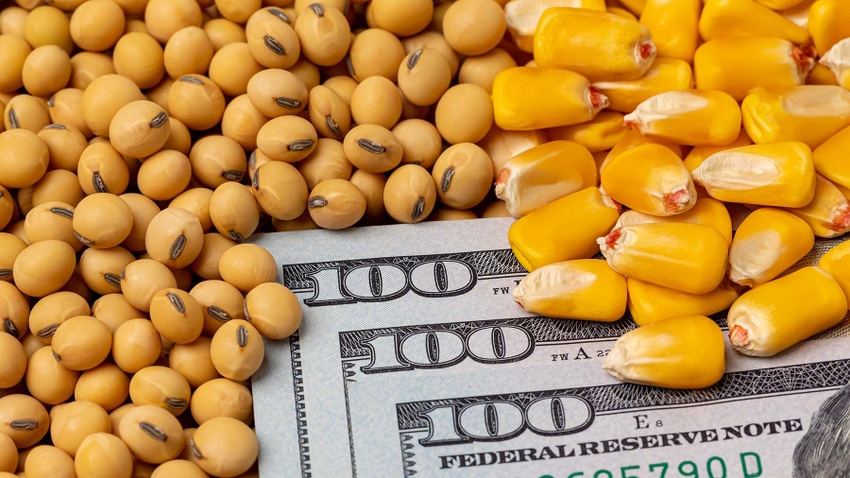
USDA made more sweeping cuts to Argentina’s corn and soybean production, which helped offset slightly lower corn prices and fading soybean gains after the April 2023 World Agricultural Supply and Demand Estimates report left domestic corn and soybean usage categories unchanged. Wheat prices continued lower following today’s report after USDA reduced domestic usage as well as import forecasts for major buyers in the Middle East and Southeast Asia. But Tuesday’s report is likely just a bump in the road for current market conditions – expect a return to weather market trading over the next couple days.
“Markets responded minimally to USDA’s April 2023 WASDE reports,” notes Farm Futures grain market analyst Jacqueline Holland. “If anything, there was a slight downtick in price movement, but that will likely be overshadowed by any changes to U.S. weather forecasts in the coming days. Markets remain increasingly focused on new crop production and usage estimates, which will be published in next month’s WASDE update.”
Here are a few highlights from today’s report.
Corn
USDA’s latest outlook for corn saw reductions in imports along with food, seed and industrial use (FSI). Imports faded 10 million bushels lower, while FSI dropped 10 million bushels “reflecting cuts to corn used for glucose and dextrose and starch.” Supply and use fell in equal amounts, leaving ending stocks unchanged at 1.342 billion bushels. Analysts were expecting that total to fall to 1.319 billion bushels, meantime. The season-average farm price held steady, at $6.60 per bushel.
Global 2022/23 production was lowered by 3.3 million metric tons (approximately 130 million bushels) to 1.436 billion metric tons. Cuts in Europe, Argentina and Uruguay were partially offset by an anticipated increase in Russia. Global ending stocks moved modestly lower, to 11.625 billion bushels.
“USDA made aggressive cuts to Argentina’s corn crop. As the world’s third largest corn exporter, the smaller crop will increase pressure on global corn supplies,” Holland says. “USDA refrained from making any increases to Brazil’s corn crop, much to the trade’s disappointment. But this wasn’t a surprise – USDA tends to be more conservative with its overseas crop projections than many market players would prefer.”
Soybeans
USDA elected to make no soybean supply or demand changes in the April report. That leaves ending stocks steady at 210 million bushels. Analysts were expecting to see moderate cuts, offering an average trade guess of 198 million bushels prior to today’s report. The season-average farm price for both soybean and soymeal prices also held steady, while soyoil prices eased 2 cents lower to 64.0 cents per pound.
Global production estimates fell by around 202 million bushels for a new total of 13.580 billion bushels. Reductions in Argentina and Uruguay were partially offset by increases in Brazil.
The trade was already widely anticipating USDA’s downward revisions to Argentina’s corn and soybean production, Holland points out. Early harvest reports have suggested worse than expected yields in Argentina, which was reflected by USDA’s crop downgrades, she says.
“That should help keep a strong floor under soybean prices for growers in the Northern Plains who may be forced to consider alternative cropping options this spring,” Holland says. “It creates an additional financial burden for livestock and poultry producers dependent upon soymeal, however.”
Argentina is the world’s largest soymeal and soyoil producer, so the further crop downgrades add more supply stress to already tight global soybean stocks, according to Holland.
Wheat
For wheat, USDA notes slightly higher supplies, lower domestic use, steady exports and increased ending stocks. Supplies were boosted by 5 million bushels due to higher imports. Domestic use eroded 25 million bushels lower on reduced feed and residual use. Exports are unchanged at 775 million bushels, although USDA noted offsetting changed for white and hard red spring exports. Stocks moved 30 million bushels higher to 598 million bushels. That was above the average trade guess of 574 million bushels but still 14% lower year-over-year. The season-average farm price fell 10 cents to $8.90 per bushel.
Globally, supplies increased slightly, with world consumption also trending higher. Also of note, China is importing the most wheat since 1995/96. Global ending stocks saw modest reductions and is now at 9.741 billion bushels – the lowest level since 2015/16.
Read more about:
WASDEAbout the Author(s)
You May Also Like






